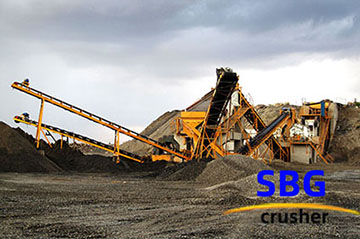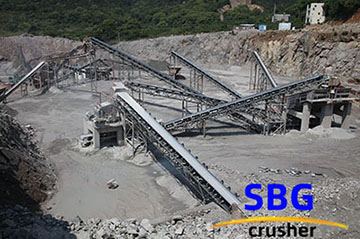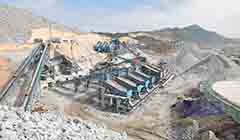
A blind spot (or blind area) is the area around a vehicle or construction equipment that is not visible to the operator, either through direct line of sight or indirectly through the use of inside and outside mirrors. Construction machines are usually large and have a closed lid. This can cause blind areas around the device to become very large
 سؤال
سؤال 32;Must provide an operator’s manual. Thoroughly observe the machinery before using such as brakes, headlights, windshield wipers, horn to name a few. Adjust the mirrors so you’re able to see your blind spots. Always wear a seatbelt. Don’t overload the equipment. Turn off the engine when you leave the vehicle.
32;Must provide an operator’s manual. Thoroughly observe the machinery before using such as brakes, headlights, windshield wipers, horn to name a few. Adjust the mirrors so you’re able to see your blind spots. Always wear a seatbelt. Don’t overload the equipment. Turn off the engine when you leave the vehicle.
 سؤال
سؤال 32;2. Maintain Constant Communication. It is vital that operators of heavy equipment maintain ongoing communication with each other, the ground crew, and their supervisors. Two-way radios are at present the best way to do this (learn about Radio Etiquette for Safe and Effective Communication ). 3.
32;2. Maintain Constant Communication. It is vital that operators of heavy equipment maintain ongoing communication with each other, the ground crew, and their supervisors. Two-way radios are at present the best way to do this (learn about Radio Etiquette for Safe and Effective Communication ). 3.
 سؤال
سؤال :Safety Working Around Heavy EquipmentHeavy Equipment Tool Box Topic
:Safety Working Around Heavy EquipmentHeavy Equipment Tool Box TopicIn the Tool Box Talk below you will be familiar with the Minimum requirements and safety tips to be conducted to all construction workers during working around the Heavy
 سؤال
سؤال :Heavy Equipment Operator PptMicrosoft PowerpointPresentation Tools
:Heavy Equipment Operator PptMicrosoft PowerpointPresentation ToolsIn this toolbox talk, learn about the hazards of working around heavy equipment and how to safely avoid them. Working Around Heavy Equipment Safety Talk. Working in
 سؤال
سؤال
AGC Tool Box Safety Talk Volume 3: Chapter 1 Circular Saws INTRODUCTION 1. Review any accidents or “near accidents” from the past week. 2. Describe the hazards of the work as they relate to your project. Explain or show the SAFE way of doing the job. 3.
 سؤال
سؤال
Tool Box Safety Topic. Working Around Heavy Equipment. Introducon: Heavy equipment, such as cranes, excavators, and sidebooms are essen7al part of
 سؤال
سؤال
Working around Heavy Equipment “In the Clear” SAFE WORK PROCEDURE swp_xWorkingAroundHeavyEquipment.docx Page 2 of 3 Revised: May 6, 2021 • OH&S REGULATION 26.14.2 DESIGNATED When needed
 سؤال
سؤال :Toolbox TalkHeavy Equipment
:Toolbox TalkHeavy EquipmentIt is important that the person who is operating heavy equipment has the proper certifications and training to do so. In this article, we will discuss safety protocol, the
 سؤال
سؤال 32;TBT Meeting Topics : Working Around Heavy Equipment – जब भ क स heavy equipment क प स क र य क य ज रह ह त वह क र य करत समय क स प रक र क स वध न बरत ज न ह , इसक बत न क ल ए य कह सकत ह य द द ल न क ल ए working around heavy equipment safety toolbox talk म ट
32;TBT Meeting Topics : Working Around Heavy Equipment – जब भ क स heavy equipment क प स क र य क य ज रह ह त वह क र य करत समय क स प रक र क स वध न बरत ज न ह , इसक बत न क ल ए य कह सकत ह य द द ल न क ल ए working around heavy equipment safety toolbox talk म ट
 سؤال
سؤال
Working around Heavy Equipment Background 75% of construction related “struck by” and “run over” fatalities involve heavy equipment. The use of such equipment is essential on the majority of O&G proje cts. The following apparatus are commonly used on O
 سؤال
سؤال
HEAVY EQUIPMENT SAFETY. Operation of heavy equipment such as excavators, loaders, graders, rollers, and bulldozers, should always be done by highly skilled operators who have demonstrated the ability and necessary skills to operate safely. Ground-based workers should be trained in how to work safely around the equipment, and how to stay
 سؤال
سؤال :Heavy Equipment Toolbox Talk SafetyHeavy Equipment Safety Training
:Heavy Equipment Toolbox Talk SafetyHeavy Equipment Safety TrainingHeavy Equipment Safety. Heavy equipment has been designed to handle very large volumes or large loads. As such, heavy equipment such loaders, dozers, or trackhoes
 سؤال
سؤال
Operators and workers must wear appropriate PP E when working with heavy equipment. This includes items such as hard hats, high-visibility vests, safety glasses, gloves, and steel-toed boots. PPE serves as a
 سؤال
سؤال 187; Safety on the Set
187; Safety on the Set
Safety Rules for Working Around Heavy Equipment. Keep clear of moving equipment. Never assume the operator knows where you are or where you’re going. Keep an eye out for moving equipment at all times. Watch out for and stay clear of pinch points, earth-moving equipment and cranes. If you must walk around a piece of heavy equipment, alert the
 سؤال
سؤال
The following is a brief overview and summary of the regulations in Title 8 related to safety when working around heavy equipment. Not all of the applicable Title 8 regulations are given below. Provide and require
 سؤال
سؤال
When trucks and heavy equipment have to operate in reverse ensure signs are posted warning of the danger and trucks are equipped with an audible back-up alarm. The back-up alarm is a legislative requirement O.Reg. 213/91 Sec. 105 for trucks, and the signs required in these situations is covered in O. Reg. 213/91 Sec. 104 (6)
 سؤال
سؤال :Safety Working Around Heavy EquipmentHeavy Equipment Toolbox Talk Safety
:Safety Working Around Heavy EquipmentHeavy Equipment Toolbox Talk SafetyHeavy equipment is both powerful and dangerous, both for the operator and for those who work around it. Heavy equipment is dangerous due to its size, weight, and complex operating procedures. Safely working in the
 سؤال
سؤال 32;When it comes to roofing work, it’s important to be mindful of general safety topics that can help prevent accidents and injuries. Here are a few topics to cover in your toolbox talks: 16. Safe lifting techniques and avoiding back injuries. Roofing work often requires heavy lifting, which can put a strain on your back.
32;When it comes to roofing work, it’s important to be mindful of general safety topics that can help prevent accidents and injuries. Here are a few topics to cover in your toolbox talks: 16. Safe lifting techniques and avoiding back injuries. Roofing work often requires heavy lifting, which can put a strain on your back.
 سؤال
سؤال 32;4) Never jump onto or off the equipment. Operators should always use the three-point contact rule when climbing onto or off heavy equipment. The three-point rule means having both feet and one hand, or one foot and both hands in contact with the ladder access at all times. 5) Inspect and service the equipment regularly.
32;4) Never jump onto or off the equipment. Operators should always use the three-point contact rule when climbing onto or off heavy equipment. The three-point rule means having both feet and one hand, or one foot and both hands in contact with the ladder access at all times. 5) Inspect and service the equipment regularly.
 سؤال
سؤال :Safety Working Around Heavy EquipmentTool Box Talk
:Safety Working Around Heavy EquipmentTool Box TalkSafetyTips-Safely working in the area of any heavy equipment requires the shared responsibility of both the equipment operator and their co-workers. As with all O&G
 سؤال
سؤال 32;The swing radius is the entire circle from a given point that parts of the equipment may move within. Generally, when we think of swing radius we picture the superstructure of a crane but the movement
32;The swing radius is the entire circle from a given point that parts of the equipment may move within. Generally, when we think of swing radius we picture the superstructure of a crane but the movement
 سؤال
سؤال
Keep equipment/material a safe distance back from the water’s edge Avoid traveling over ice covered water Properly berm road and pathways near water hazards At least one U.S. Coast Guard approved 30-inch life ring with not less than 90 feet (not to exceed
 سؤال
سؤال
Ride only in approved seats and wear a seat belt. Construction workers are around heavy equipment every day, and they can become accustomed to the presence of heavy equipment, not giving much thought to the risks. Taking some time to understand and follow safety rules – and staying alert while on the job – can help construction workers stay
 سؤال
سؤال
Four Other Hazards to Consider Relating to the Use of Heavy Equipment. Slips, trips, and falls are some of the most common types of incidents that result in injuries to workers. Operators of heavy equipment are not exempt from these incidents occurring to them. Climbing into the cab of equipment or walking on the slick surfaces of a machine are
 سؤال
سؤال : LALSHOW
: LALSHOW3 Ways to Stay Safe Around Heavy Equipment. Construction Safety. Approaching the topic of workplace safety around heavy equipment might feel tiring to you if you've spent any number of years working in the construction field or any related line of work where equipment is present. Safety reminders are many and some stories of life-altering
 سؤال
سؤال 32;How to Stay Safe Around Heavy Machines. To stay safe when around heavy equipment, employers must: Train employees on the proper way to use the equipment. Have guards and clear signs for easier movement of these heavy machines. Employing spotters to help operators drive safely. Ensuring everybody onsite wears high
32;How to Stay Safe Around Heavy Machines. To stay safe when around heavy equipment, employers must: Train employees on the proper way to use the equipment. Have guards and clear signs for easier movement of these heavy machines. Employing spotters to help operators drive safely. Ensuring everybody onsite wears high
 سؤال
سؤال : 59
: 59Start writing clearly and confidently with QuillBot. By enhancing your communication and giving your writing greater impact, we can help you reach your personal and professional goals. Write effortlessly and efficiently with QuillBot's suite of AI tools. Paraphrase, check grammar, analyze tone, improve fluency, and more.
 سؤال
سؤال 32;By:David Weszley, Contributor Electricity is present in every workplace. When it is necessary to service, maintain, or modify an electrical system that is “live,” here are six action items that must be addressed: NFPA 70E electrical safe work practices 2021 edition must be used when working on or near energized equipment. NFPA 70E 2021
32;By:David Weszley, Contributor Electricity is present in every workplace. When it is necessary to service, maintain, or modify an electrical system that is “live,” here are six action items that must be addressed: NFPA 70E electrical safe work practices 2021 edition must be used when working on or near energized equipment. NFPA 70E 2021
 سؤال
سؤال
Toolbox Talk: Working around Heavy Equipment. Background. 75% of construction related “struck by” and “run over” fatalities involve heavy equipment. The use of such equipment
 سؤال
سؤال

آلة تكسير الحصى بقدرة 45-1200 طن/ساعة بسعر مناسب، يرجى الاتصال بنا إذا لزم الأمر.
احصل على عرض أسعار